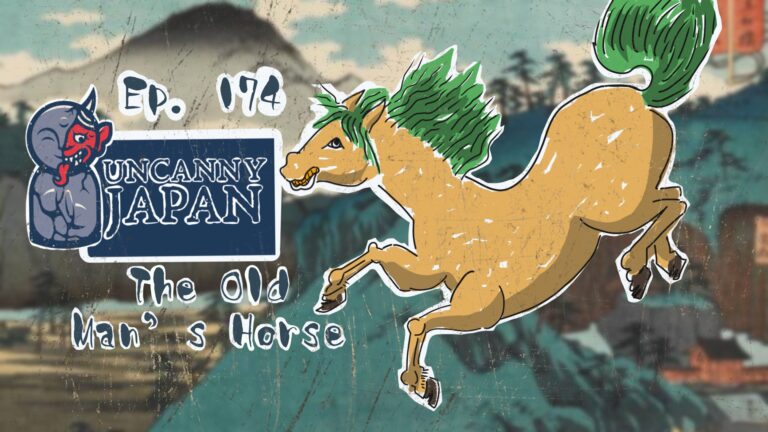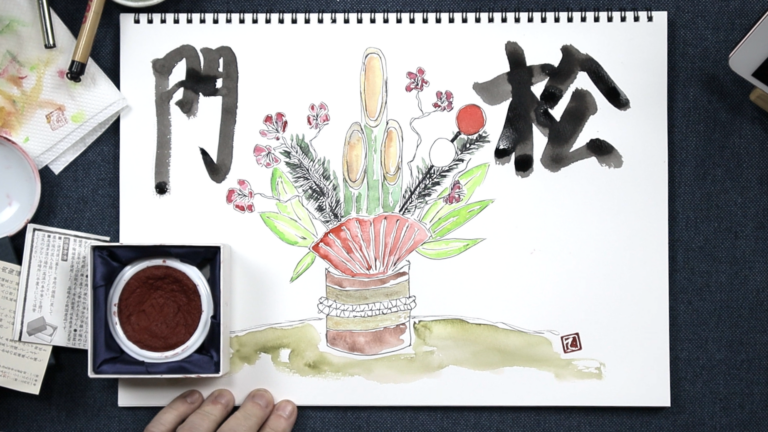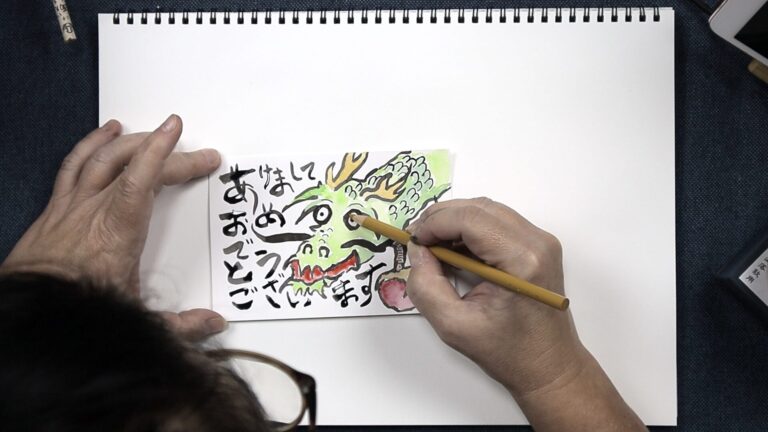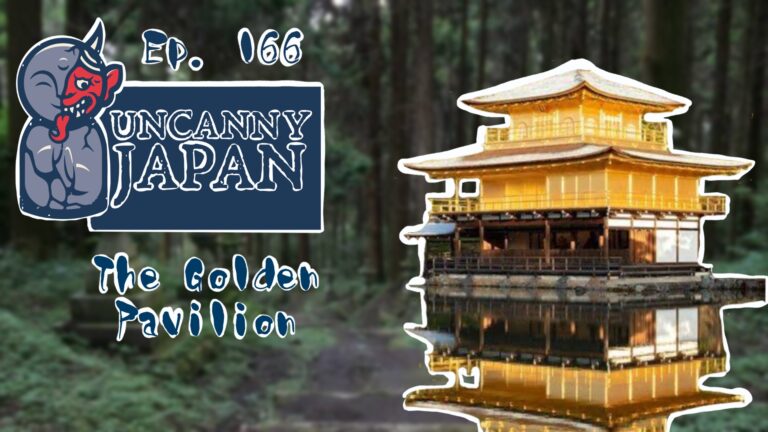Sea Pigs and Dirt Dragons — Enticing Language and a Quiz!
Don’t worry. You can’t fail.
Hi! Uncanny Japan here. I took a month off, pre-recorded several episodes, and visited the States to see family and friends. I got back to Japan at the tail end of October. Here it is November 15th or thereabouts and it’s the first time I’ve sat down to write and record a new episode in about two months. It feels like two years. Everything has changed.
So today, I want to be a little unserious for a moment because we need that, too, sometimes. And I’m going to challenge myself to make you fall in love with kanji — you know those complicated, pesky characters that have way too many different pronunciations and meanings, and must be written in a certain stroke order with a certain balance or they look like crap. Yes, those. There will even be quizzes. Get back here. It’s going to be fun!
You know animals, and how animals have names, like fish and dog and hedgehog. And these names have meanings that we may or may not know right off hand. Let’s take hedgehog, that one’s easy. It’s from middle English. A hedge is where you can find these little darlings and hog refers to their pig-like snout.
Well, Japanese animals, of course, have Japanese names consisting of one or more kanji. An easy example is squirrel, or risu in Japanese. The two characters that make up the word risu are chestnut and mouse. A chestnut mouse. Adorable.
It kind of reminds me of that meme that went around years ago where people were renaming animals with clever little descriptions. A snake was a nope rope or a danger noodle. But in this case these are the animals’ real names in Japanese.
What exactly is a sea pig and a dirt dragon? Stick around and find out.
Introduction
Hey hey! This is Thersa Matsuura and you’re listening to UncannyJapan. A gentle reminder to pick up The Book of Japanese Folklore by me if you’re into that kind of thing, or you know, an awesome present for someone who is into that thing. Or you could leave a review if you already have it. I’ve got a tiny little goal to reach 100 reviews by Christmas. Only thirty to go.
If you like horror, there’s my short story collection The Carp-Faced Boy and Other Tales. Please consider the audio version, narrated by me, Hey, at least I get paid a little for that one. Long sad angry story. Oh, and finally, do check out the wickedly wonderful comic “Knights Vs Samurai”. The first two issues are out and number three is coming soon.
Sea Pig?
So, let’s get into today’s irreverent excitement, where you’ll learn some silly facts that you can use to impress your family and friends. It sounds like study, but I promise it’ll be hilarious. Quick grab a pen and paper. And if you want to try and guess the answers, have your handy pause finger ready.
All-righty then, let’s start with the title of the show. What animal does the kanji for ocean and pig together make? What is a sea pig? If you want a hint, the Japanese is, iruka 海豚. I know, it sounds nothing like how you’d think sea pig would be pronounced. The answer is a dolphin, of course. I mean, they do have that distinctive nose, right?
River Pig?
A sea pig, however, is different from a river pig. Yes, that’s an animal, specifically a fish, too. So what’s a river pig? This one’s hard. I never would have guessed it. If someone walked up to me on the street before today and asked: Hey you! What’s a river pig? I never would have gotten the answer because I thought these were ocean fish.
Ready? The hint? Think, dangerous sushi. Yep! The answer is fugu 河豚 or blowfish. Evidently, blowfish can survive in brackish waters, not all the way up a river, but near the sea. We’re learning so much today, aren’t we?
So the person who named the fugu might have been sitting at an estuary, gazing into the water, when they noticed this cute little fish that they then go on to poke with a stick. It inflated itself and that person leapt to their feet and ran all the way home to tell everyone about the “river pig” they’d just discovered. Fugu. River pig.
River Horse?
While we’re on the topic of rivers, what do you think a river horse would be? If you are familiar with the Greek etymology of animal names, you have an advantage here, because it is probably taken straight from that, seeing as how these animals aren’t indigenous to Japan. River horse. Hint: kaba 河馬. Ka for river, ba for horse. Very good, a river horse is a hippopotamus! Did you know hippos means horse in Greek and potamos means river. Me, neither. I had no idea.
Ocean Rat?
Next! Let’s go back to the sea for a moment. What, my friends, is the animal that in Japanese uses the two kanji for sea and mouse or ocean rat? You might get this one. You have to be creative in your thinking though. I actually like the English word for this creature a little better. Hint: rats scurry around on the ground. Answer: Namako 海鼠 or sea cucumber. Sea cucumbers in Japanese are ocean rats.
Ocean Moon?
Next is: sea or ocean moon. A beautiful word for a beautiful sea creature. The English word isn’t as lovely but still pretty spot on with its description. Hint: Kurage in Japanese. Otherwise known as, a jellyfish. Because they do look like beautiful moons in the sea, or possibly someone looking down into the water and seeing one thinking it was the reflection of the moon. Kurage 海月, sea moon.
Ocean Star?
Next is one I’ve known forever but totally thought it had different kanji until just this past week when I looked it up. Since we did sea moons (jellyfish), what do you think a sea star is? Yes, it’s super easy if you say it that way. A sea star is a starfish. But in Japanese it’s pronounced hitode 海星, which I had always assumed meant “person hand”, because it sort of shaped like a person’s hand? I’ve been wrong for 35 years. Note: many of these are also written in katakana, so without the kanji. Katakana is easy to read, but there’s no deep meaning behind it. So there’s probably some adult Japanese out there who don’t know all of these. Maybe?
Sea Gallbladder or Sea Chestnut or Red Cloud?
Okay, back to work. One more ocean related name that’s a tad bizarre. The creature’s pronunciation doesn’t change, but it has three different names. The characters all change depending on if it’s existing happily in the wild or you’re fixing to pour soy sauce on it and wolf it down.
Okay, here we go: Name number one: the two characters are sea (again) and the kanji for gallbladder. What on earth (and sea) could a sea or ocean gallbladder be? Hint: It’s delicious 海胆. Well, I’m not personally a big fan, but some people love these. Another hint, remember “sea gallbladder” is the name for it when it’s in the water, not prepared and ready to be eaten. Name number two is also used while the bugger is still alive and even more of a hint. A huge hint. It’s the kanji for sea and … chestnut. 海栗. You got it didn’t you?
Let’s go on to name number three. This is when it’s on your plate, and it’s called a red cloud 雲丹. That’s a good hint, too. A red cloud, hmm? Give up? It’s uni or sea urchin.
Hunting Tiger?
The next animal you’ll find in water but it’s a mammal. There’s no sea or river or water in the name. It’s written: hunting tiger. I had no idea where the tiger part came from, but then I did read in one place the name came from the Ainu language in Hokkaido. A hunting tiger in Japanese is the cute little rakko 猟虎 or sea otter!
Water Pig?
Here’s a fun one. It’s not sea or river again, but just “water”, water and pig. Boy people thought everything looked like pigs back in the day, huh? What’s a water pig? I can’t even think of a hint without giving it away. It’s a capybara 水豚. Which is the same in Japanese, capybara. You’ll mostly find it written in katakana because that’s easy. But we don’t go the easy route here, do we? No. Your homework is to go to your Japanese friend and write the kanji for water and pig (you might need to practice a few times), then ask them, what animal is this? I’m curious how many will know. You’ll definitely garner some respect after that, though. Especially if you get the stroke order right. Maybe they’ll take you out and buy you some red cloud to eat.
Ocean Tanuki?
Okay, let’s do another water one before we move to land. What could the characters for sea and tanuki mean? Ocean raccoon dog. Again, as god is my witness I thought these animals only lived in and near rivers. But a quick search told me they are strong swimmers who (and I quote) “… are known to cross significant spans of saltwater”. They aren’t indigenous to Japan so probably when brought here they were given this cute moniker without too much thought. All right, ready. A sea tanuki is a beaver 海狸! Isn’t learning fun?
Dirt or Earth Dragon?
Moving on, let’s scoot away from the sea for a moment. Remember I mentioned dirt dragons or earth dragons? How about we tackle that one. But don’t worry (hint) this isn’t some big ol’ dragon…but rather a sort of cuddly elusive one. Another hint? These dirt dragons do a lot of damage…in the dirt. Tearing through it. Yes, you are correct. A dirt dragon is a mogura 土竜 or mole! Some poor farmers in ancient Japan wake up to find their crops all torn up. Darn it, the dirt dragons struck again!
Big Bear Cat and Little Bear Cat?
Staying on land, we have three characters now and this is the same characters in Chinese. So you can impress your Chinese friends, too! Anyway, what do you imagine a big bear cat is大熊猫? It can also just be written bear cat 熊猫and have the same meaning. I think China was the big hint here. A big bear cat is a giant panda. In which there is also a small bear cat. That would be…a lesser panda 小熊猫 in Japanese or red panda in English.
Long Tailed Donkey or Bag Mouse?
Okay, I’ll end with another non-native-to-Japan animal, usually written in katakana, but it does in fact have kanji, at least two sets if you want to be picky about it. The first name has three characters: long tailed donkey 長尾驢. If that doesn’t ring a bell, how about: bag mouse 袋鼠. Exactly. Put them together and you have a long tailed donkey that is a bag mouse. It’s a kangaroo. Literally pronounced kangaro- in Japanese.
House Protector and Well Protector and Child Rock Dragon?
I lied, let me end with two more related creatures whose names describe what they do. Not gross, not weird, actually kind of nice.
One is the house protector. What animal could possibly protect your house? The second one is the well protector? Gee, what could that be?
Ready? A yamori 家守, house protector, is a gecko or house lizard. And an imori 井守 (you can see this coming can’t you) is a salamander or newt, because they hang out in water. So if you ever run across a gecko on your ceiling or a newt in your well, leave them be. They’re doing a service. Keeping you, your house, and your well safe.
Okay, wait, don’t go yet. One more. I can’t stop myself. It’ll be quick, I promise. All right. All right. In the same ballpark as gecko and newt (that’s your hint), three characters, what is a rock, dragon, child? A rock dragon child? Did you get it? If you said tokage 石竜子or lizard, you’d be right!
Very good. Thank you for playing, go show off to your friends, make bets with your Japanese friends. If you want to see the kanji for each animal, I put them on the show notes on the Uncanny Japan website. Everyone hang in there, stay safe and well, I really mean it. Consider becoming a patron if you’d like. I’d like to get to know you better.
Talk to you in two weeks. Bye bye.
Note: Some links are affiliate which means I get a little bit of money if you purchase through them. Thank you!






